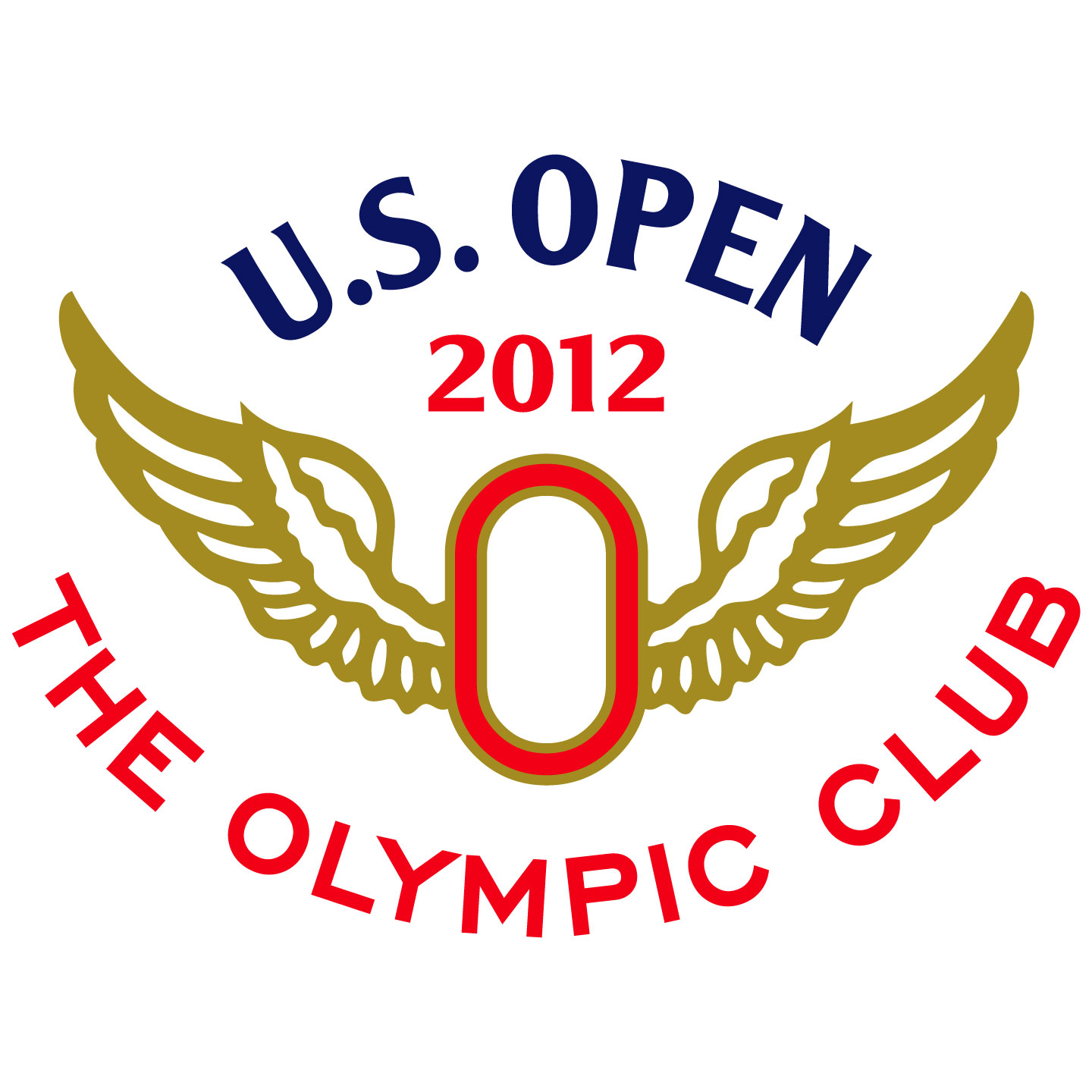Olympic Proportions
 Written by @Fullmarx12
Written by @Fullmarx12
The golf world focuses its attention on San Francisco this week where the U.S. Open will be contested at the Olympic Club. This course has both variety and character – few if any courses will feature both a sub-300 yard par-4 (the 7th hole comes in at 288 yards) and a plus-600 yard par-5 (the 16th will be stretched this week to 670 yards, the longest hole in major championship history). With no water hazards and only a single fairway bunker, Olympic’s difficulty lies in its small targets, uneven fairways, and heavily-guarded greens. The USGA, somewhat embarrassed by Rory McIlroy’s rout of Congressional last year, will look to return the event to what we all have come to know and love: a limited number of birdies, an emphasis on par and an abundance of frustration.
Make the first shot count
Marked by narrow fairways and tiny greens, Olympic will reward the more accurate players in the field both off the tee and into the green. The last time the U.S. Open was held here in 1998, Lee Janzen was T-3 for the week in fairways hit and led the field in greens in regulation en route to victory. With its trademark reverse camber fairways, accuracy off the tee is especially important. On six different occasions, the design of the hole goes one way (i.e. right-to-left) while the slope of the fairway runs in the opposite direction (i.e. left-to-right). This phenomenon – which can appear to defy physics from the tee box – means that even a slight error will result in a missed fairway. As a result, I will look to back players who are not only accurate off the tee but can also shape the ball both ways since tee shots must be flighted against the slope of the fairway to have any chance of holding.
Aim Small, Miss Small
At around 4400 square feet, the greens at Olympic are some of the smallest ones that Tour players will encounter all year. For the sake of comparison, the average PGA Tour stop will have greens around 6,000 square feet while the greens at Augusta National average out at nearly 6,500 square feet. These small, sloping targets will be difficult to hit from the middle of the fairway, let alone from the finely-manicured rough around the course. Meanwhile the targets off the tee can be just as small, with most fairways measuring around 20-30 yards wide. At 344 yards long, the 18th hole will likely take driver out of players’ hands, but with a fairway only 21 yards across in the landing area it will prove a difficult target to hit even with a long iron in hand. Accuracy from tee-to-green, as well as the ability to miss in the correct spots when need be, will be a great indicator of success this week. Even the best players will miss their share of greens this week, though, so I am looking at scrambling statistics – especially scrambling from the rough and sand save percentage – as key short game metrics to help decipher who is most likely to get up-and-down for par when it counts.
Strong First Punch
While many major championship venues save their toughest holes for the end of the round, Olympic gets them out of the way at the very start. In fact, some are terming the first six holes at the Lake Course the hardest opening stretch in major championship history. Starting with the 520 yard, par-4 opening hole (which played as a par-5 every other time Olympic hosted this event) and including multiple reverse camber holes, the opening third will take a toll on every player at some point this week. In 1998, Lee Janzen bogeyed two of his first three holes, but righted the ship and played the final 15 holes without a bogey to win by a shot. As a result, this week I will mostly be looking to back seasoned veterans – players who not only can handle the rigors of U.S. Open conditions, but who will not fold if their round gets off to a rough start. If players survive the opening gauntlet, they will find opportunities to score at the close of their round; most players will be hitting short or mid-irons into the green on each of the final five holes.
Contenders
Justin Rose Statistically, few players may enter this event in better shape. Already a winner this year at Doral, Rose ranks in the top 10 on the PGA Tour in the following categories: scoring average, greens in regulation percentage, sand save percentage, scrambling, scrambling from the rough, ball striking (driving distance + driving accuracy + GIR percentage), final round scoring average, and par-4 performance. Other than that he doesn’t have much going for him. It’s been a while since Rose last played well in this event (T-5 in 2003, T-10 in 2007) but I expect him to play well this week. He has three top-10 finishes in his last four U.S. starts, including T-8 at Augusta.
Hunter Mahan One of only three men (along with Jason Dufner and Tiger Woods) with multiple PGA Tour titles in 2012, Mahan is having the best season of his career. He boasts strong stats both in terms of driving accuracy and ball striking, and has shown an ability to translate solid performances off the tee into high finishes in previous U.S. Opens (three straight top-18 finishes from 2007-2009).
Steve Stricker Finished T-5 when this event was played at Olympic in 1998, the highest finish of any player also in the field this week. Always a solid ball-striker both off the tee and into the greens, Stricker realizes that at 45 his chances for an elusive major championship are quickly dwindling so this may be one of the best chances he has left.
Fade Alert
Bubba Watson The life of the reigning Masters champion has been a whirlwind since leaving Augusta. Between the media circus that came with the green jacket and the obligations of becoming a new parent, Watson has admittedly not focused much on golf since April. He skipped the Players last month to focus on family, and didn’t practice much at all leading up to the Memorial – where he promptly missed the cut. Watson stated Tuesday that he doesn’t like how the course is set up, and he will have to deal with the chaos of playing with Tiger and Phil for the first two rounds. All told, I think there is money to be made fading Bubba in H2H matchups this week.
K.J. Choi The 2011 Players champion has had a mediocre season in 2012, and the U.S. Open has never been his favorite event. He’s missed the cut here four times since 2006, with his best showing in that time frame T-47. Choi struggled in the season’s first major, and has spent much of the year fighting wrist tendinitis. He currently ranks outside the top 100 on Tour in total putting, scrambling, total driving and the all-around ranking. This is not the week where he will turn his season around.
Martin Kaymer The German has famously had trouble at Augusta due to an inability to draw the ball from right to left. On a course where shaping the ball in both directions off the tee is imperative, I can see him struggling.
Sleeper Potential
Peter Hanson First appearing on the national scene in April, Hanson is flying seriously under the radar right now. Top-5 finishes at both WGC events and the Masters earlier this year were followed by a T-15 showing at the Players in his last U.S. start. The Swede finished T-3 last week at the Nordea Masters in his home country and has the ball striking stats to indicate he has a chance to contend this week.
Jonathan Byrd He tends to struggle historically in this event but is playing the best golf of his life right now. He’s carded four consecutive top-12 finishes across some very taxing courses: Quail Hollow, TPC Sawgrass, Colonial and Muirfield Village. When you include his T-8 finish earlier this year at Riviera it completes a rather impressive collection that implies he can hang with the best when the scoring conditions are most difficult.
Todd’s Take Favorites rarely offer value in golf tournaments but that won’t stop me from picking Lee Westwood to break through this week and win the title. I think his driving stats, current form, and overall mental toughness make him a great candidate with legitimate value to win the prize. Along with betting him to win, look for prices on him to finish in the top 5 and top 10 as added insurance.












